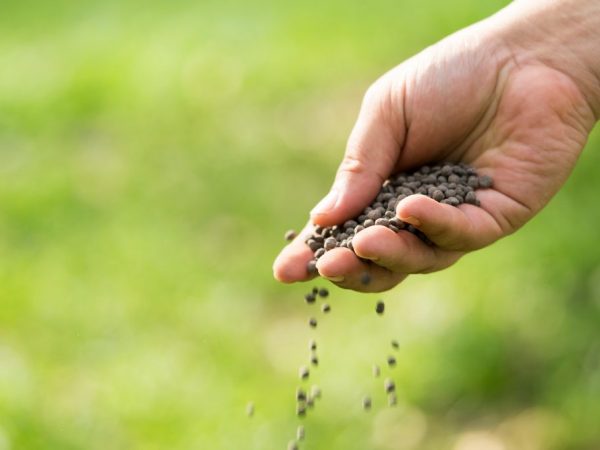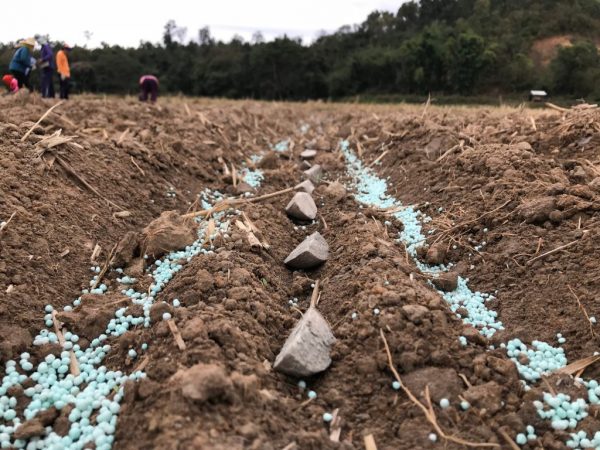Application of mineral fertilizers for potatoes
Growing a particular crop, the farmer strives to make the harvest as rich as possible. When it comes to potatoes, mineral fertilizers are most often used for potatoes, especially when it comes to small farms. If you manage to establish an optimal program for feeding the soil and the crop itself, the resistance of the potato to parasites and weeds will significantly increase, as well as the quality of the harvested crop.

Application of mineral fertilizers for potatoes
Why mineral fertilizers are applied
As mentioned earlier, any farmer strives to harvest the maximum yield without losing the quality of the crop. For this, it is recommended to use top dressing, which increases the crop's resistance to parasites and diseases, and also protects against the adverse effects of the environment.
However, the choice of mineral fertilizer requires a deeper study of the issue, in order to choose the optimal scheme for feeding the crop before planting, we will find out what functions mineral fertilizers should perform:
- With their help, the rate of growth of tubers after planting should increase.
- Better seedling distribution can be achieved
- The quantitative characteristics of the crop will increase, and the weight of the fruits will also increase
- Roots will grow faster, the same goes for root shoots
- It will be possible to achieve resistance to fungi and bacteria that destroy the vegetable
The fact is that the minerals contained in the feeding accompany the fact that the vegetable accumulates the hormone for growth, and also absorbs vitamins and other useful substances. Simply put, the use and use of mineral feed increases the economic efficiency of growing a given crop.
Types of mineral fertilizers
Let's figure out what types of mineral nutrition exist.
Depending on the composition:
- Simple composition
- Composite
Depending on the chemical composition:
- With phosphorus
- With potassium
- With nitrogen
It should be said that all organic fertilizers can be combined with other types of feeding, this will help to establish an optimal fertilization system. It is also important to know that mineral dressing contains components such as:
- Saturated phosphates or, as they are also called, superphosphates
- Ammonium sulfate
- Potassium sulfate
- Urea
- Ammonium nitrate (second name for ammonium nitrate)
It is important to mention an important feature, the presence of nitrogen in the fertilizer is very good, because this substance saturates the soil before planting, like water, which contributes to better nutrition of the root system. However, provided that there is too much nitrogen, it can even harm the crop, which will not make it possible to harvest.
Fertilizer rates
Of course, the amount of organic fertilizers applied should directly depend on what kind of soil is in a particular area, that is, you need to know the chemical composition of the soil before applying.Here are the averaged norms:
- In the presence of problem land - you need to make 1 kg of nitrate, no more than 3 kg of phosphorus, as well as 100 kg of organic matter per hectare
- If potatoes are planted on fertile soil, then the volume of organic fertilizers is reduced to 3 kilograms per hundred square meters, plus about 1.5 kg of potassium will be needed
- If your soil is not the best on your site, which is most common, then you need to take 3 kg of nitrogen, 2.5 kg of organic matter, 2 kg of potassium (no more).

Do not violate the fertilization rate
As mentioned earlier, compliance with all the recommendations for feeding will allow you to nourish not only the soil, but also the tuber of the culture with useful substances.
Features of autumn feeding
General advice regarding fertilizing the soil in the fall after planting suggests that one square meter of land will require about 8 buckets of humus or manure harvested from winter. In addition, of course, organic feeding is also used. At the same time of year, superphosphate is introduced into the soil, the fact is that its complete assimilation takes a lot of time, the rate of its introduction is about 40 grams per square meter.
Provided that phosphorus is added in the fall, by the spring this substance will be completely absorbed into the soil after application, and assimilated by the plant. At the same time, in parallel with phosphorus, the soil for potatoes is fertilized with potassium sulfate, for this, a rate of 20 grams per square meter is taken.
If you find in the fall that the land is on an area with high acidity, then you should throw all your efforts into restoring the normal balance. To correct this characteristic, you need to apply dolomite flour, ash or lime. This component is applied to the ground in a proportion of 250 grams per square meter. To understand that the composition of the soil is too acidic, it is enough to pay attention to whether sorrel grows in the beds with potatoes, and also whether there is a blue tint of the earth on the site.
Feature of spring feeding
During this period, it is extremely important to saturate the earth with nitrogen. This substance is found in large quantities in the most common manure, which is why the excrement of domestic animals is an indispensable product in farming. However, as experience shows, the best result can be achieved when humus is introduced together with organic feeding. Here are the most common integrated soil fertilization schemes in spring:
- Manure bucket 300 grams of ash 20 ml nitrophoska
- Ammonium nitrate 30 grams 30 g of potassium sulfate, the substances are introduced in parallel with the green manure
- Manure with peat (possibly compost) ammonium nitrate 30 grams nitrophoska 40 grams potassium sulfate 25 grams
- Potassium humus sulfate 30 grams ammonium nitrate 30 grams dolomite flour 500 grams (is also an antioxidant) superphosphate 50 grams
In addition to these components, it is allowed to introduce micronutrient fertilizers, such as molybdenum or copper, into the soil; these components also contribute to the nutrition of the plant root system more fruitfully.
Mineral dressing at the planting stage
Some farmers believe that spot fertilization of potatoes with the help of mineral fertilizers is more economical and beneficial, although in reality this can only be applied to a small area. With this complex scheme, nutrients are applied to each furrow. For example, if we are talking about the mineral nutrition of potatoes, then in each prepared hole you need to put about 500 grams of manure and 3-4 tablespoons of ash, without dissolving it in water.
If you use agrochemicals, then the scheme changes, nitrophosphate and bone meal are placed in the well in the same proportions, the amount is selected strictly as indicated in the instructions.
Top dressing of the root system
This type of fertilizer is applied before the hilling stage of the crop, after the soil has been digged. This is necessary so that the feeding is absorbed better, so that the active substances reach their goal, that is, to the roots.For these purposes, the following components are used:
- Bird excrement. Many attribute the droppings to too aggressive types, but this is suitable for potatoes, it can be used even undiluted or diluted in water;
- Urea. This component is used only after being diluted with water, for this you will need one tablespoon of the component and 10 liters of water. One bush will need about 500 ml;
- Herbal infusions. These infusions are prepared from absolutely any herbs; even weeds that were removed from the site before planting the crop can be used. It is important to wait for the moment when the mood begins to ferment, as soon as this happens, you can water the potato bushes. Usually this type is appropriate in early summer, that is, in June.
Foliar nutrition
Nutritional support is absolutely necessary at all stages of crop development, since a single fertilization will not be enough. To enhance the feeding effect, you can try a foliar fertilization scheme. It is recommended to carry out it after the weeding of the crop. It is also better to choose the evening time for the procedure, this will prevent burning of the foliage.
With the help of foliar nutrition, it is possible to achieve good results, because all substances go directly into the plant, activating all metabolic processes in them, which accelerates the growth and maturation of shoots.


